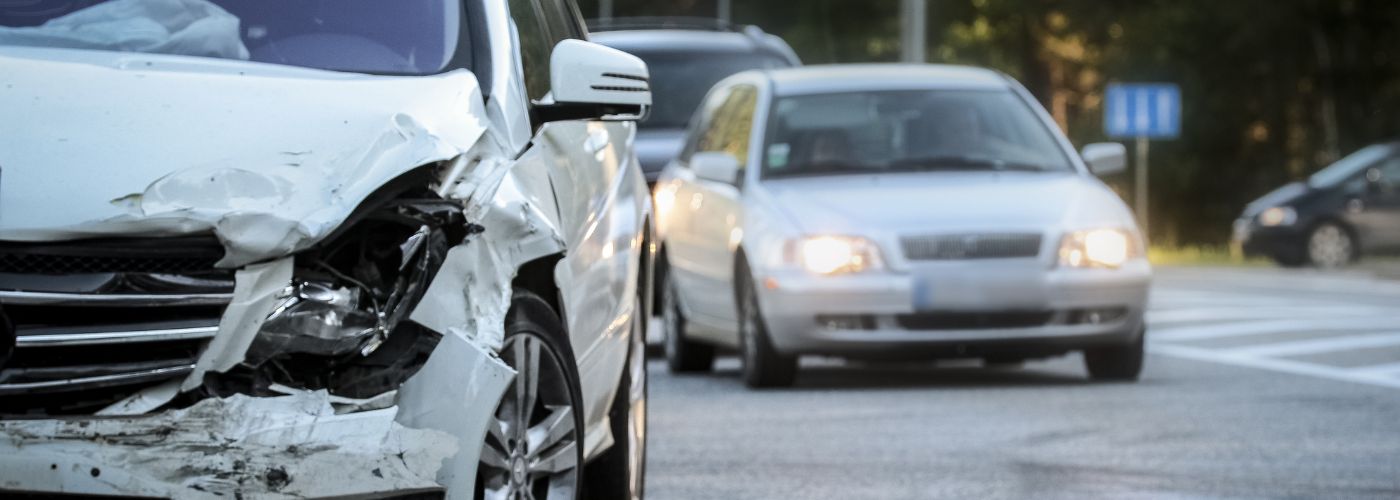Imagine driving down the dazzling Las Vegas Strip, surrounded by the glitzy lights and bustling energy of Sin City. Suddenly, a car sideswipes you and speeds off into the night, leaving you bewildered and frustrated. Unfortunately, you now need to file a hit and run claim after the accident, which is very common in Las Vegas.
If you find yourself in this situation, navigating the process of filing a hit and run claim can be overwhelming. However, fear not – we have compiled a comprehensive guide to give you the best tips for filing hit and run claims in Las Vegas.
How To File A Hit and Run Claim
When dealing with a hit and run incident, the importance of seeking legal advice from a hit and run accident lawyer cannot be overstated.
These specialized attorneys have the expertise to navigate the complex legal system and help you file a claim effectively. They can assist in gathering evidence, negotiating with insurance companies, and pursuing compensation for damages.
One crucial step in filing a hit and run claim is to report the incident to the police immediately. Providing as many details as possible about the accident can aid in locating the at-fault driver.
Additionally, documenting any injuries or property damage with photos and witness statements can strengthen your case. Remember that time is of the essence in hit and run claims, so acting swiftly with the guidance of a skilled lawyer is key to ensuring a favorable outcome.
Evidence Needed For A Hit & Run Case
In a hit and run case, gathering evidence is crucial in order to identify the responsible party. Statements from witnesses and victims are often key pieces of evidence that can help provide a detailed account of what occurred during the incident. Additionally, a police report documenting the details of the accident scene can provide valuable information for investigators.
Photos taken at the scene of the hit and run can also be important evidence, as they can show any damages to vehicles or property as well as help establish the sequence of events. Video footage from surveillance cameras or dash cams in nearby vehicles may capture crucial moments leading up to and after the hit and run, providing further insight into what happened.
Combined, these different types of evidence play a vital role in helping law enforcement authorities piece together what transpired during a hit and run incident and ultimately hold the responsible party accountable for their actions.
What Charges Can You Press For A Hit and Run Accident?
In a hit and run accident, the charges that can be pressed depend on the severity of the incident and the laws in the jurisdiction where it occurred. Common charges include leaving the scene of an accident, reckless driving, and vehicular manslaughter if someone was killed as a result of the hit and run.
In some cases, additional charges such as driving under the influence or possession of illegal substances may also be brought against the perpetrator.
It’s important to note that hit and run accidents are taken very seriously by law enforcement and prosecutors due to their potentially dangerous consequences. These incidents not only demonstrate a lack of responsibility on behalf of the driver but also show disregard for human life.
Victims of hit and run accidents have rights under the law, including seeking compensation for medical expenses, vehicle damage, and emotional distress. By holding offenders accountable through pressing appropriate charges, justice can be served for those affected by these senseless acts.
What Happens If Police Don’t Catch The Hit & Run Criminal?
If the police do not catch the perpetrator in a hit and run case, several outcomes may occur:
Legal Consequences: The hit and run driver may evade criminal charges if not apprehended promptly. However, if identified later, they could face severe penalties such as fines, license suspension, or even imprisonment depending on the jurisdiction and the specifics of the case.
Civil Liability: The driver might still be held civilly liable for damages caused in the accident. This could lead to lawsuits where they may have to compensate the victim(s) for property damage, medical bills, lost wages, pain and suffering, and other related expenses.
Insurance Ramifications: If the hit and run driver’s identity remains unknown, victims may turn to their own insurance coverage for compensation through uninsured motorist protection. This can lead to increased premiums or policy cancellations due to filing claims without a confirmed responsible party.
Investigation Continues: Law enforcement could continue investigating leads or evidence to identify the culprit. They might review surveillance footage, trace vehicle parts left at the scene, interview witnesses, or use other investigative techniques to solve the case.
Public Outreach: Police may appeal to the public for information regarding the incident through press releases, social media posts, or other means seeking tips that could help identify the hit and run driver.
Closure for Victims: Without resolution, victims might struggle with emotional trauma and an inability to find closure after being harmed by someone who fled accountability. Support services like counseling may be necessary for them to cope with such distress.
In essence, when a hit and run criminal is not caught by police immediately:
– Legal consequences might be delayed but can still ensue later.
– Civil liability remains a possibility through potential lawsuits.
– Insurance coverage dynamics may come into play.
– Investigations could persist through various means.
– Public involvement becomes pivotal in solving the case.
– Victims might face ongoing emotional challenges due to lack of closure from unresolved incidents.
What Happens If The Hit & Run Criminal Doesn’t Have A License/Insurance?
In the unfortunate event that a hit and run criminal does not have a license or insurance, the situation becomes more complicated for both parties involved. From the victim’s perspective, seeking justice and financial compensation can be challenging as they may struggle to identify and hold the responsible party accountable.
If the hit and run driver is found without a license or insurance, they may face severe legal consequences that could include hefty fines, suspension of driving privileges, and even jail time in some cases.
The absence of insurance coverage means that any medical expenses or property damage incurred by the victim would likely not be covered by an insurance policy, leaving them to bear the financial burden themselves.
Ultimately, this scenario underscores the importance of responsible driving behavior and emphasizes the need for stringent enforcement of traffic laws to protect innocent individuals from such reckless actions on our roads.
This is why many drivers choose to get underinsured/uninsured auto insurance or work with an underinsured/uninsured auto attorney to make sure they’re covered in any scenario involved in such event.
How Much Money Can You Get From A Hit & Run Settlement?
Hit and run settlements can vary significantly based on various factors such as the extent of damages, injuries sustained, and insurance coverage of both parties involved. In general, a hit and run claim tends to result in higher settlement amounts due to the severity of the incident and the legal repercussions for fleeing the scene.
The compensation received from a hit and run settlement may include medical expenses, vehicle repairs or replacement costs, lost wages, pain and suffering, and punitive damages.
It’s important to consult with an experienced attorney specializing in hit and run cases to accurately determine the potential settlement amount based on your specific circumstances. Factors such as evidence gathered at the scene, eyewitness testimonies, police reports, and insurance policies will all play a crucial role in negotiating a fair settlement.
Can You Sue Your Own Insurance For A Hit and Run Accident?
Many people wonder if they can sue their own insurance company in such cases. The answer typically lies in the type of coverage you have on your policy. Generally, yes, with uninsured motorist coverage you may be able to provide compensation for a hit-and-run accident where the other driver is not identified.
However, there are certain conditions and limitations that may apply when filing a claim with your own insurance company for a hit-and-run accident. It’s important to carefully review your policy details and consult with an experienced attorney to understand your rights and options in such situations. Remember that each case is unique, and seeking professional advice can help navigate through the legal complexities of suing your own insurance for a hit-and-run accident.




How Shared Liability Affects Your Car Accident Claim
Have you ever wondered why two drivers can both be found at fault in a
Mar
What Are Punitive Damages? Can You File A Claim For Them?
Have you ever wondered why some lawsuits result in hefty payouts while others barely scratch
Mar
Can Parents Be Sued For Their Child’s Car Accident?
Many parents believe their kids are too young to cause serious trouble on the road,
Feb
Can You File A Claim For Injuries That Happened In School?
Every year, countless students experience injuries while attending school, yet most never think about seeking
Feb